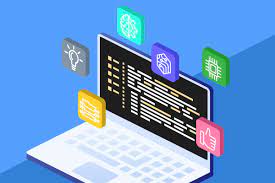Enhancing Business Efficiency Through Effective Workflow Management Strategies
The Importance of Workflow Management
In today’s fast-paced and dynamic work environment, effective workflow management is essential for ensuring productivity, efficiency, and collaboration within an organisation. Workflow management involves the design, execution, and monitoring of a series of tasks that need to be completed to achieve a specific goal or outcome.
By implementing a well-structured workflow management system, businesses can streamline their processes, reduce errors, and improve communication among team members. This ultimately leads to better decision-making, faster project completion times, and increased overall productivity.
Key Benefits of Workflow Management:
- Efficiency: Workflow management helps in automating repetitive tasks, eliminating bottlenecks, and ensuring that work progresses smoothly from one stage to the next.
- Transparency: By providing visibility into each task’s status and progress, workflow management promotes accountability and allows for better tracking of project timelines.
- Collaboration: Teams can collaborate more effectively when workflows are clearly defined, roles are assigned clearly, and communication channels are streamlined.
- Quality Control: Workflow management enables businesses to implement quality control measures at various stages of a project to ensure that standards are met consistently.
- Data Analysis: By capturing data on how tasks are completed within a workflow, businesses can analyse performance metrics to identify areas for improvement and optimisation.
Implementing Workflow Management Software
To effectively manage workflows in today’s digital age, many organisations turn to workflow management software solutions. These tools offer features such as task automation, real-time collaboration, reporting capabilities, and integration with other business applications.
Workflow management software can be customised to suit the specific needs of an organisation and can adapt as business requirements evolve. By centralising workflows in a digital platform, teams can work more efficiently regardless of their physical location.
Conclusion
Workflow management is not just about completing tasks; it’s about optimising processes for maximum efficiency and effectiveness. By investing in workflow management practices and tools, businesses can stay competitive in today’s rapidly changing business landscape while fostering a culture of continuous improvement and innovation.
Understanding Workflow Management: Key Questions and Answers for Enhancing Organisational Efficiency
- What is workflow management and why is it important?
- How can workflow management improve efficiency in an organisation?
- What are the key benefits of implementing a workflow management system?
- What role does technology play in modern workflow management practices?
- How can businesses ensure successful implementation of a workflow management system?
- What are some common challenges faced when implementing workflow management processes?
What is workflow management and why is it important?
Workflow management is the systematic design, execution, and monitoring of tasks within a business process to achieve specific goals efficiently and effectively. It involves structuring workflows, assigning roles and responsibilities, automating repetitive tasks, and ensuring smooth progression from one stage to the next. Workflow management is crucial for organisations as it streamlines processes, enhances collaboration among team members, improves transparency and accountability, enables better decision-making, and ultimately boosts productivity. By implementing robust workflow management practices and tools, businesses can optimise their operations, reduce errors, and adapt quickly to changing demands in today’s competitive business landscape.
How can workflow management improve efficiency in an organisation?
Workflow management plays a crucial role in enhancing efficiency within an organisation by streamlining processes, reducing redundancies, and facilitating better coordination among team members. By automating repetitive tasks, assigning clear roles and responsibilities, and establishing predefined workflows, organisations can ensure that work progresses smoothly and without unnecessary delays. Workflow management also enables real-time monitoring of tasks, allowing for quick identification of bottlenecks or inefficiencies that can be addressed promptly. Through improved visibility into the status of ongoing projects and better communication channels, workflow management helps teams work cohesively towards common goals, ultimately leading to increased productivity and overall efficiency across the organisation.
What are the key benefits of implementing a workflow management system?
Implementing a workflow management system offers a host of key benefits for businesses seeking to enhance their operational efficiency and productivity. By streamlining processes, automating tasks, and providing transparency into task statuses, workflow management systems enable organisations to achieve greater efficiency in their operations. Improved collaboration among team members, better tracking of project timelines, and enhanced quality control are additional advantages that come with implementing such systems. Furthermore, the ability to analyse performance metrics and identify areas for optimisation allows businesses to make data-driven decisions and continually improve their workflows. In essence, implementing a workflow management system empowers businesses to work smarter, faster, and more effectively towards achieving their goals.
What role does technology play in modern workflow management practices?
In modern workflow management practices, technology plays a pivotal role in enhancing efficiency, collaboration, and automation. Technology enables organisations to streamline their processes by providing digital tools for task assignment, tracking progress, and communication among team members. Workflow management software offers features such as automated task routing, real-time notifications, and data analytics that empower businesses to optimise their workflows and make informed decisions. Additionally, cloud-based solutions allow for remote access to workflows, enabling teams to work seamlessly from anywhere in the world. By leveraging technology in workflow management practices, organisations can achieve greater productivity, transparency, and agility in today’s fast-paced business environment.
How can businesses ensure successful implementation of a workflow management system?
To ensure the successful implementation of a workflow management system, businesses should begin by clearly defining their objectives and identifying the specific processes that need to be streamlined. It is crucial to involve key stakeholders from different departments to gain insights into their workflow requirements and address any potential challenges early on. Proper training and communication are essential to ensure that all employees understand the new system and how it will benefit their work processes. Regular monitoring and evaluation of the workflow management system’s performance are also vital to identify areas for improvement and make necessary adjustments to optimise efficiency. By fostering a culture of adaptability, collaboration, and continuous improvement, businesses can effectively implement a workflow management system that enhances productivity and drives success across the organisation.
What are some common challenges faced when implementing workflow management processes?
When implementing workflow management processes, organisations often encounter several common challenges that can hinder the successful execution of their workflows. Some of these challenges include resistance to change from employees accustomed to existing processes, difficulty in defining clear and effective workflows, lack of alignment between different departments or teams, inadequate training on new workflow management tools and technologies, and the complexity of integrating workflow management systems with existing IT infrastructure. Overcoming these challenges requires strong leadership, effective communication, stakeholder engagement, and a willingness to adapt and evolve existing processes to maximise the benefits of workflow management within an organisation.





